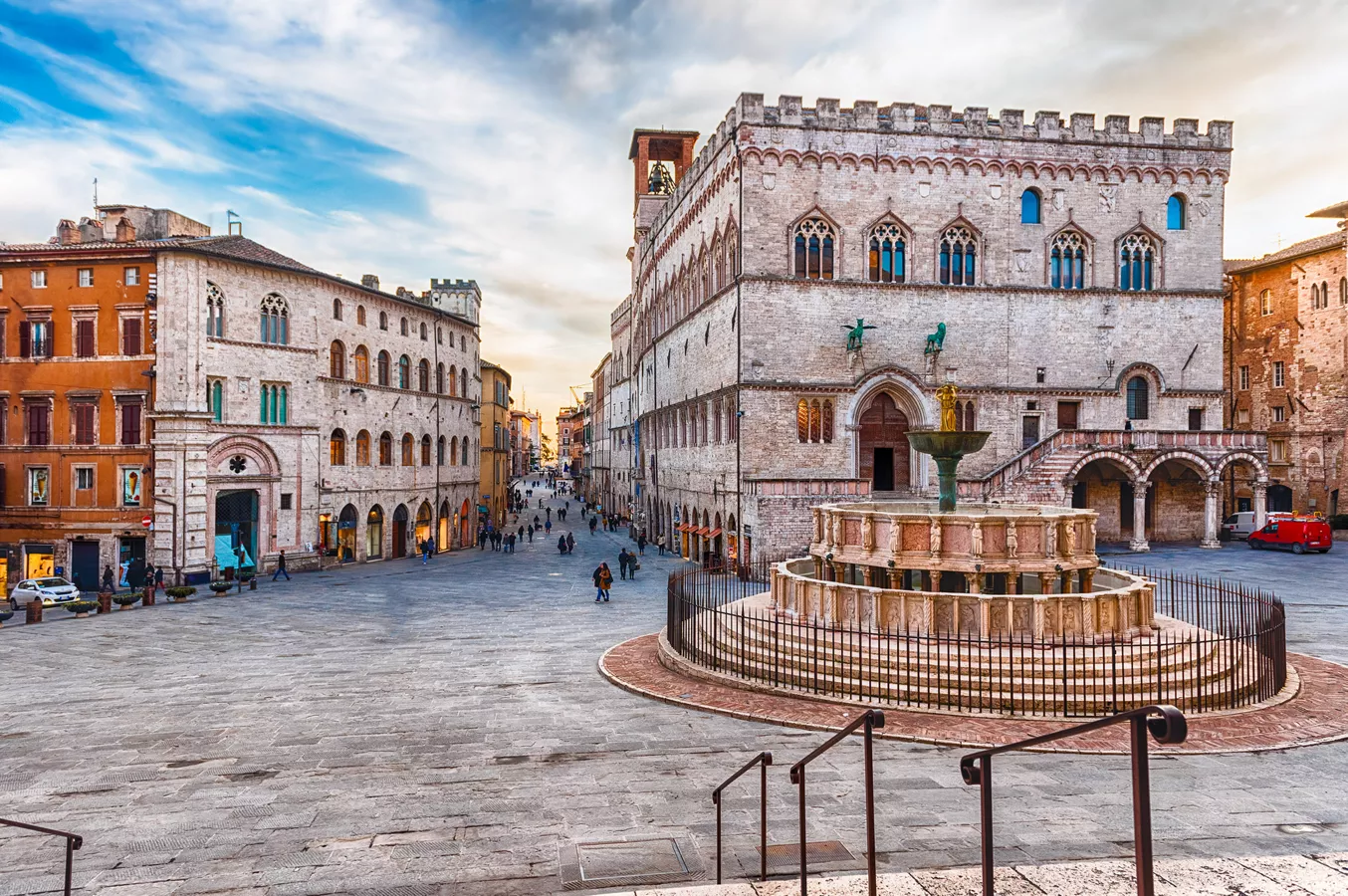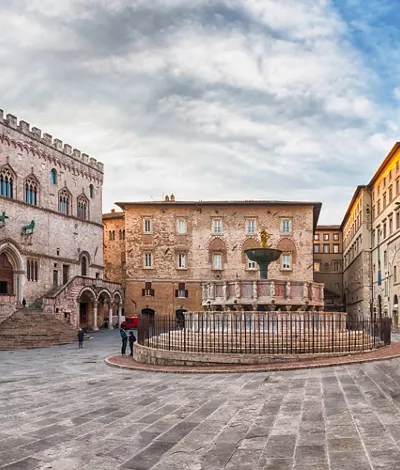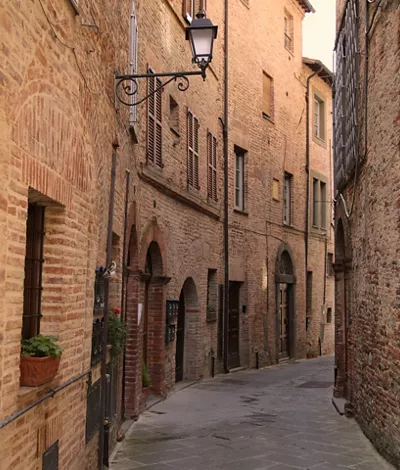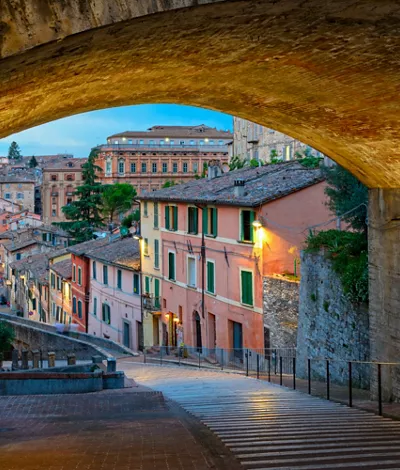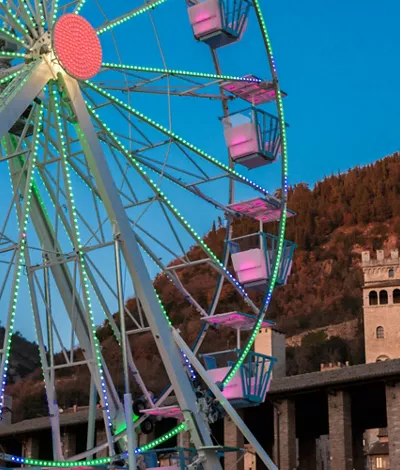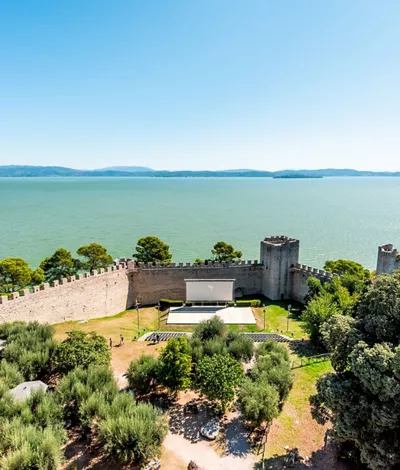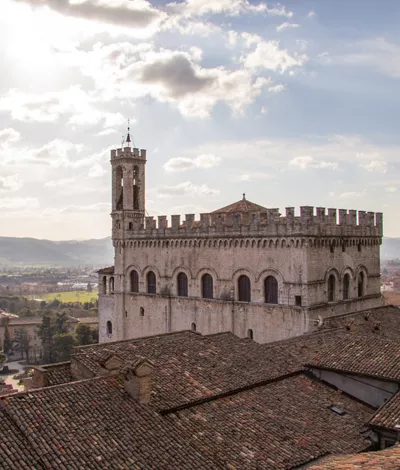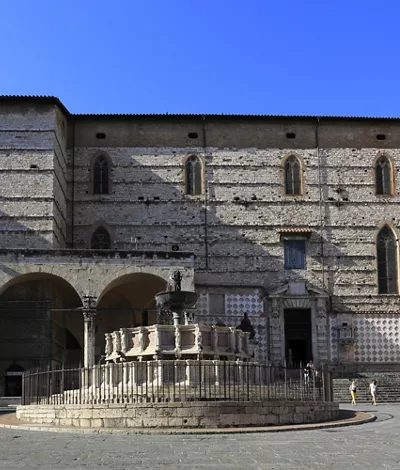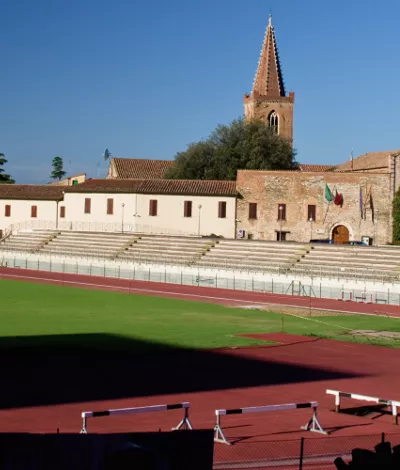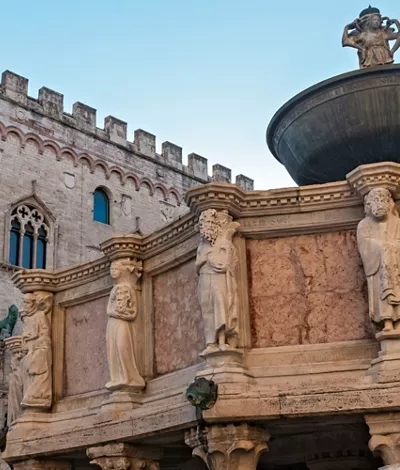In the heart of Italy lies one of its oldest centres, Perugia, known for its vibrant social life, university heritage and much more
A modern city with traces of its prominent past around every corner: standing atop a hill in the Tiber valley, Perugia, the capital of Umbria, is a renowned city of art and an effervescent cultural centre. Built as a fortified medieval village, it is encompassed by a mighty city wall. It boasts top-notch museums and beautiful nature, not forgetting chocolate, which it produces and celebrates at the mouth-watering Eurochocolate festival.
A historical and artistic jewel and beacon of central Italy
A small jewel full of characteristic narrow alleyways lined with majestic architecture, beautiful churches and treasured artwork and monuments. Above all, Perugia owes its fame as a city with a young, fresh and cosmopolitan soul to its two historic universities, which welcome students from around the world. This makes it the perfect destination for travellers of all ages in search of attractions of all kinds. Culture, entertainment and traditional flavours combine to provide a unique experience, a taste of the most authentic and profound Italy.
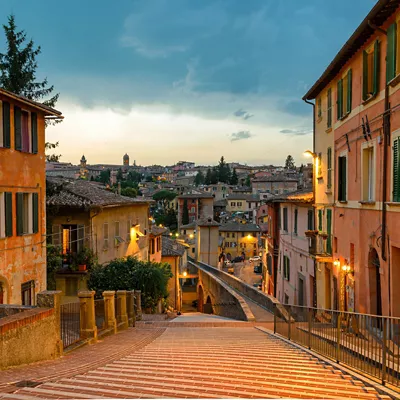
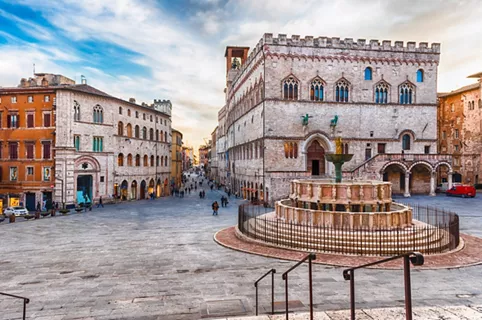
Perugia
In the heart of Italy lies one of its oldest centres, Perugia, known for its vibrant social life, university heritage and much more. A modern city with traces of its prominent past around every corner: standing atop a hill in the Tiber valley, Perugia, the capital of Umbria, is a renowned city of art and an effervescent cultural centre. Built as a fortified medieval village, it is encompassed by a mighty city wall. It boasts top-notch museums and beautiful nature, not forgetting chocolate, which it produces and celebrates at the mouth-watering Eurochocolate festival.
Discover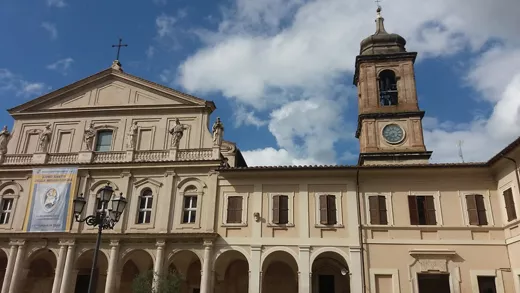
Terni
Dual soul of the “city of steel” Terni is a city nestled in the heart of the peninsula, rich in artistic and scenic beauty. Besides the Roman amphitheatre, still partly preserved, the Cathedral of Santa Maria Assunta, the Romanesque tower of the Barbarasa family and the Basilica of St Valentine, where the remains of the patron saint of lovers are kept, are worth a visit. Older buildings are mixed with contemporary architecture such as the “Lance of Light”, better known as Arnaldo Pomodoro's Obelisk. It is the modern symbol of the city and depicts the evolution of the art of smelting from the raw iron of the base to the tip that appears to be made of gold. One of the most beautiful towns in the province is Orvieto, famous for its cathedral with its polychrome façade and for the Pozzo di San Patrizio: its helicoidal staircase will take you to a depth of 62 metres. Equally fascinating are the medieval Narni and La Scarzuola, Tomaso Buzzi's “ideal city”. From a landscape point of view, the Marmore Waterfalls stand out. With a height difference of 165 metres, divided into three jumps, it is one of the highest in Europe, ideal for a range of outdoor sports such as rafting, canyoning, hydrospeed and kayaking. Visiting some caves and karstic forms excavated over millennia by water is also possible. Lake Piediluco, due to the absence of currents and the presence of regular winds, is an excellent field for rowing races.
Discover
Continue living like an Italian
Subscribe to the Newsletter so as not to miss places, events and experiences for experiencing the best side of Italy: the authentic one.

Keep up to date
Would you like to learn about the most authentic experiences to be had in Italy, stay up to date on the most interesting events, discover our special offers and receive lots of insider hints and tips?


